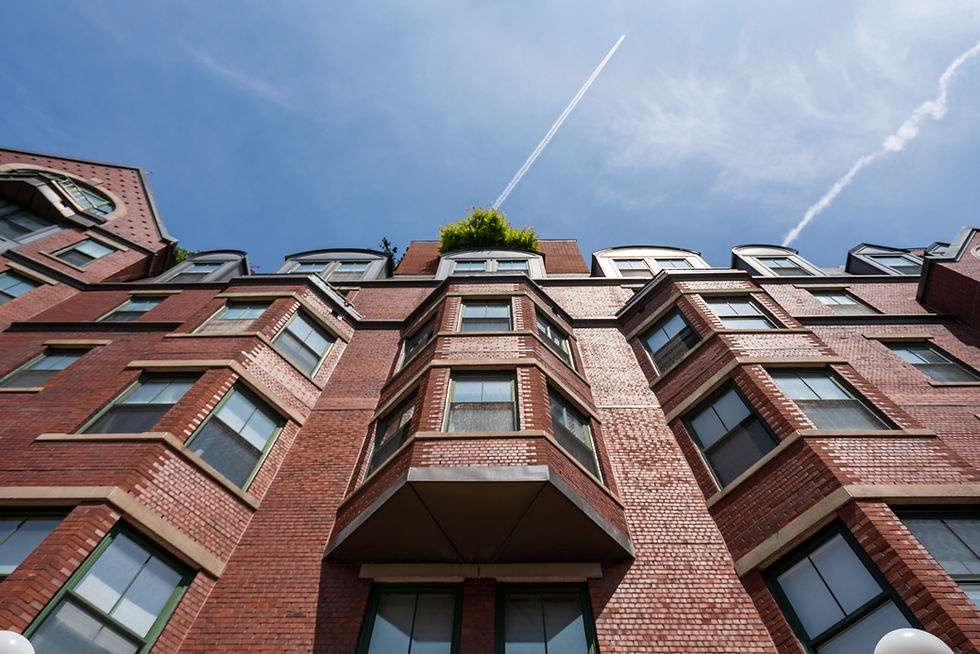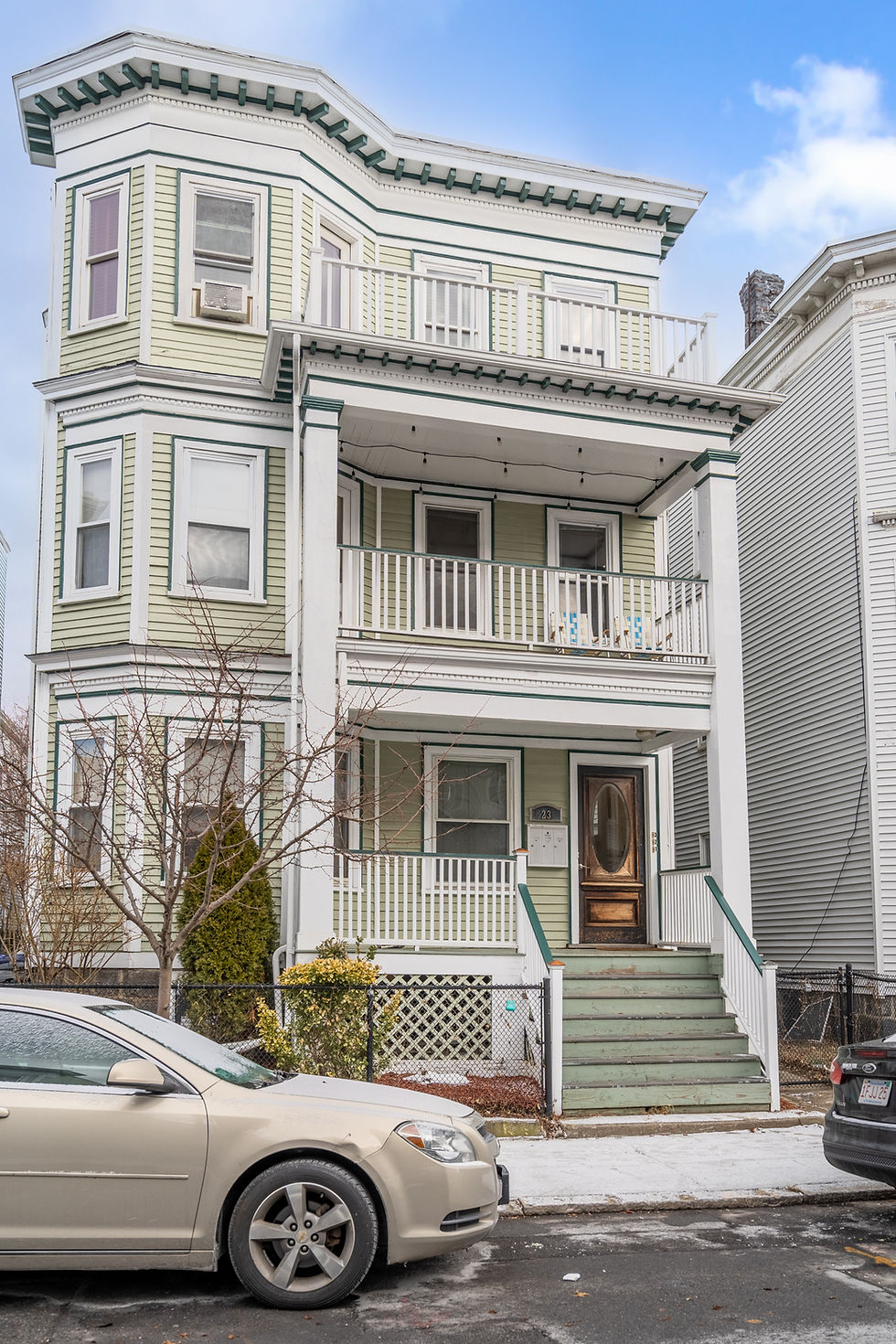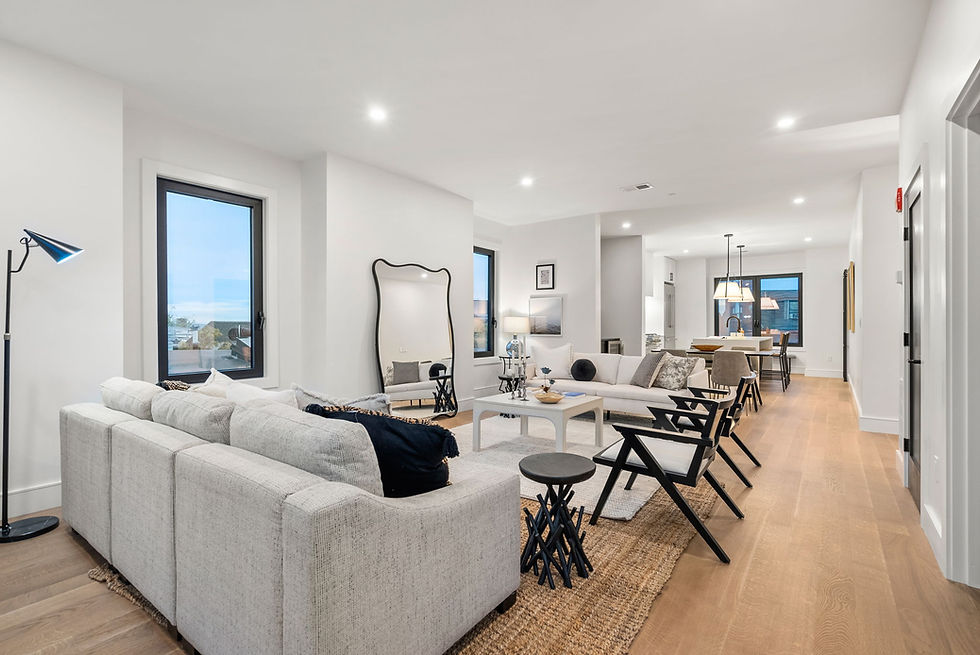Boston Real Estate: A Look at the City’s History, Homes & Future
- Amanda George

- Aug 5
- 3 min read
By: Amanda George, Realtor, George Group Boston | Boston Real Estate History & Market Insights
Boston is one of America’s oldest and most iconic cities — a place where history meets innovation every single day. From 17th‑century row houses to cutting-edge luxury condos, the Boston real estate market reflects the city’s 400‑year journey. If you’re considering living, investing, or selling in Boston, understanding its history and housing landscape will give you a powerful perspective.

A Brief History of Boston
Founded in 1630, Boston played a central role in the American Revolution, with landmarks like the Old North Church, Paul Revere’s House, and Faneuil Hall still standing today. By the 19th century, Boston had grown into a hub of industry, commerce, and education. The city expanded outward with annexations of neighborhoods like Dorchester, Charlestown, Roxbury, and Brighton, creating the diverse, neighborhood-driven layout we know today.
The layering of centuries of development is one reason why Boston has such a wide variety of housing stock — from colonial-era homes to contemporary glass towers.
The Evolution of Boston’s Real Estate Market
Boston’s housing market is as storied as the city itself.
17th–18th Century Homes: The North End and Beacon Hill still feature Federal and Georgian-style townhouses and row homes, many more than 200 years old.
19th Century Triple-Deckers: Dorchester, Jamaica Plain, Roxbury, and South Boston are famous for their multi-family wooden triple-deckers, which became the backbone of Boston’s housing supply.
20th Century Suburbanization: Post-war demand saw new single-family developments in neighborhoods like West Roxbury, Hyde Park, and Roslindale.
21st Century Luxury Boom: The Seaport District, Fenway, and Back Bay have seen major luxury condo towers rise in the last 20 years, often selling for $1,200+ per square foot.
What Kinds of Homes Boston Offers Today
Boston’s housing stock is incredibly diverse:
Historic Townhouses: Beacon Hill and the South End feature 1800s-era brownstones and Federal-style homes.
Triple-Deckers: Still a hallmark of Boston, especially in Dorchester, East Boston, and Roxbury.
Condos & Luxury Towers: The Seaport, Back Bay, and Fenway are filled with modern, amenity-rich buildings.
Single-Family Homes: Found more in outer neighborhoods like Hyde Park, West Roxbury, and East Boston.
Multi-Family Properties: Highly sought after for investment, particularly in Dorchester, South Boston, and East Boston.

What’s Coming Up in Boston Real Estate
Boston is shaping the future of housing with a mix of redevelopment and new construction:
Seaport District Expansion: Dozens of new high-rises, office towers, and luxury residences continue to reshape the skyline.
Dorchester Bay City: A massive project at Columbia Point, adding thousands of new residential units and public spaces.
Transit-Oriented Development: Blue, Red, and Green Line corridors are seeing condo and apartment growth, especially in East Boston and Somerville’s Green Line Extension zone.
Adaptive Reuse: Former warehouses and factories in South Boston and the Leather District are being transformed into lofts and modern condos.
Why People Choose to Live in Boston
Boston attracts residents for more than just its architecture:
Education: Home to over 30 colleges and universities, including Harvard, MIT, Boston University, Northeastern, and Boston College.
Healthcare: The Longwood Medical Area, Massachusetts General Hospital, and Brigham & Women’s anchor Boston as a healthcare hub.
Jobs & Innovation: Leading industries include biotech, life sciences, finance, education, and technology. Boston consistently ranks among the top U.S. cities for startups and venture capital investment.
Culture & Lifestyle: From Fenway Park to the Boston Symphony Orchestra, Boston blends rich culture with modern entertainment.
How Old Are Boston’s Homes?
Boston’s housing is among the oldest in the U.S.
Nearly 50% of homes were built before 1939, according to U.S. Census data.
Beacon Hill and the North End feature properties over 200 years old.
Triple-deckers in Dorchester and Roxbury date to the late 1800s and early 1900s.
Outer neighborhoods like West Roxbury and Hyde Park have homes built in the mid‑20th century.
New construction is concentrated in the Seaport, Back Bay, and Fenway, with cutting-edge designs and luxury finishes.

Thinking of Buying or Selling in Boston MA?
Boston is a city where history and future intersect. Whether you’re buying a historic brownstone in Beacon Hill, selling a triple-decker in Dorchester, or investing in a new East Boston condo, I can help you make the right move. I’m Amanda George, Realtor and co-founder of George Group Boston, and my team specializes in helping clients navigate Boston’s unique housing landscape.
📞 Ready to talk real estate in Boston MA?
Let’s connect: amanda@georgegroupboston.com | www.georgegroupboston.com








Comments